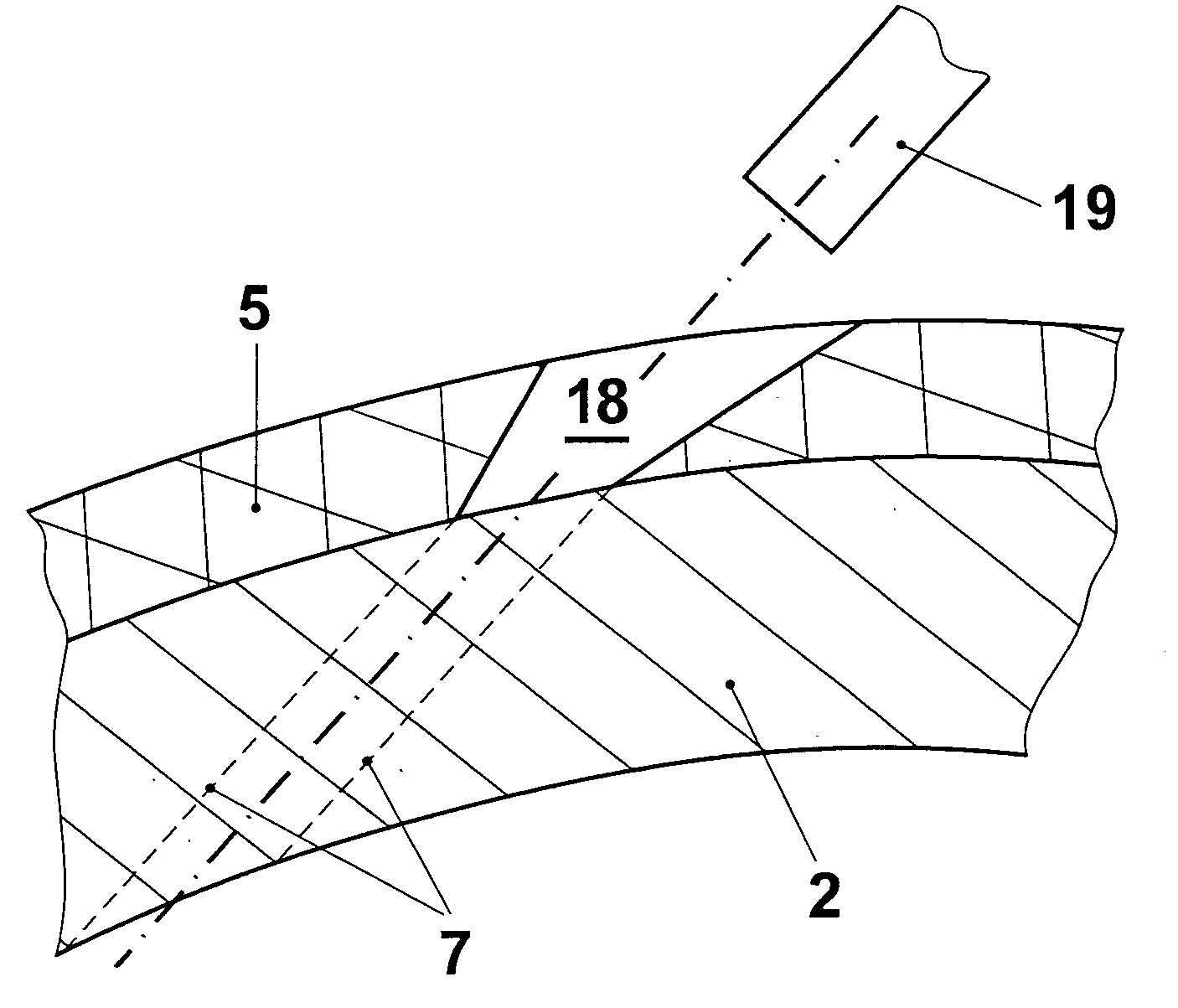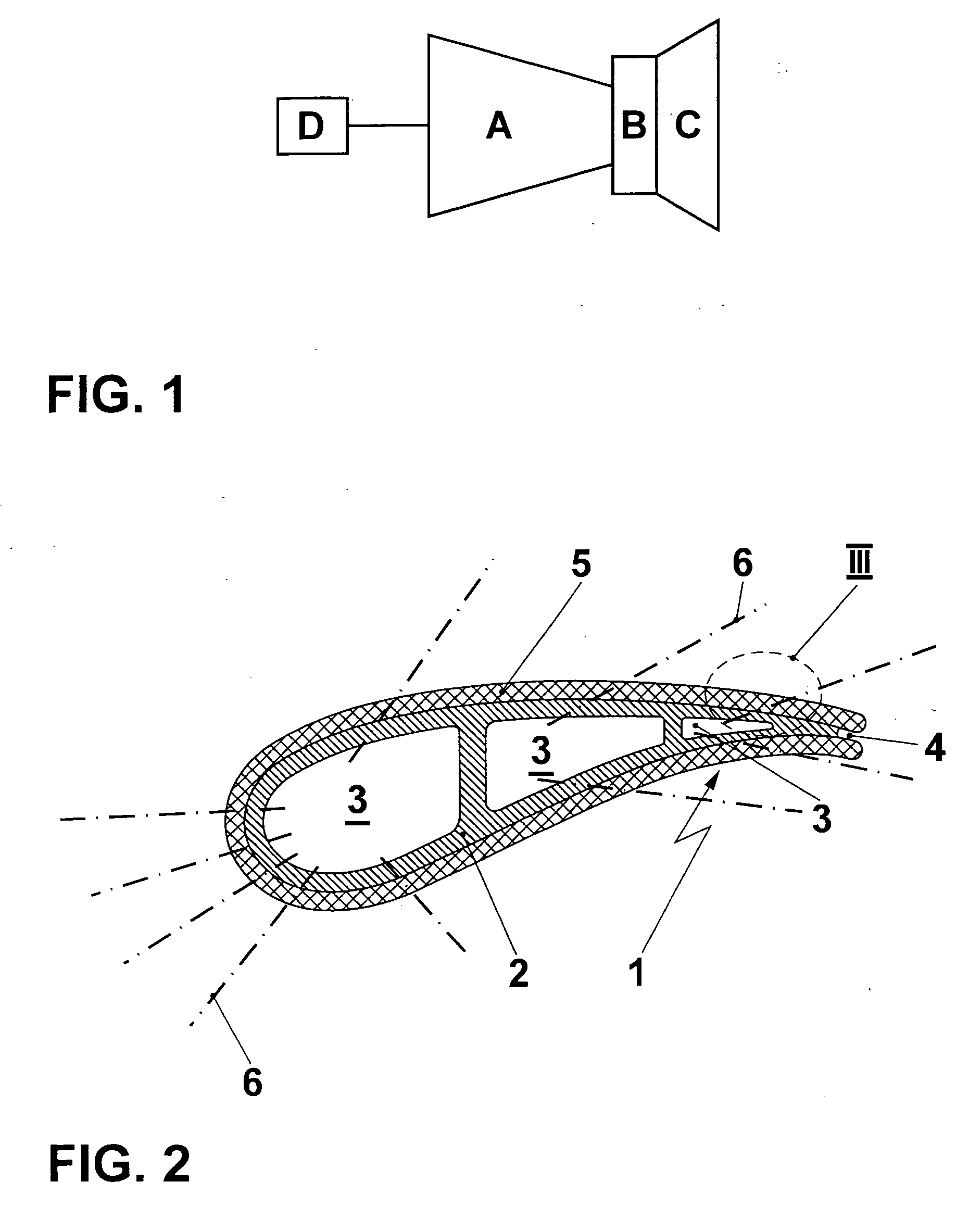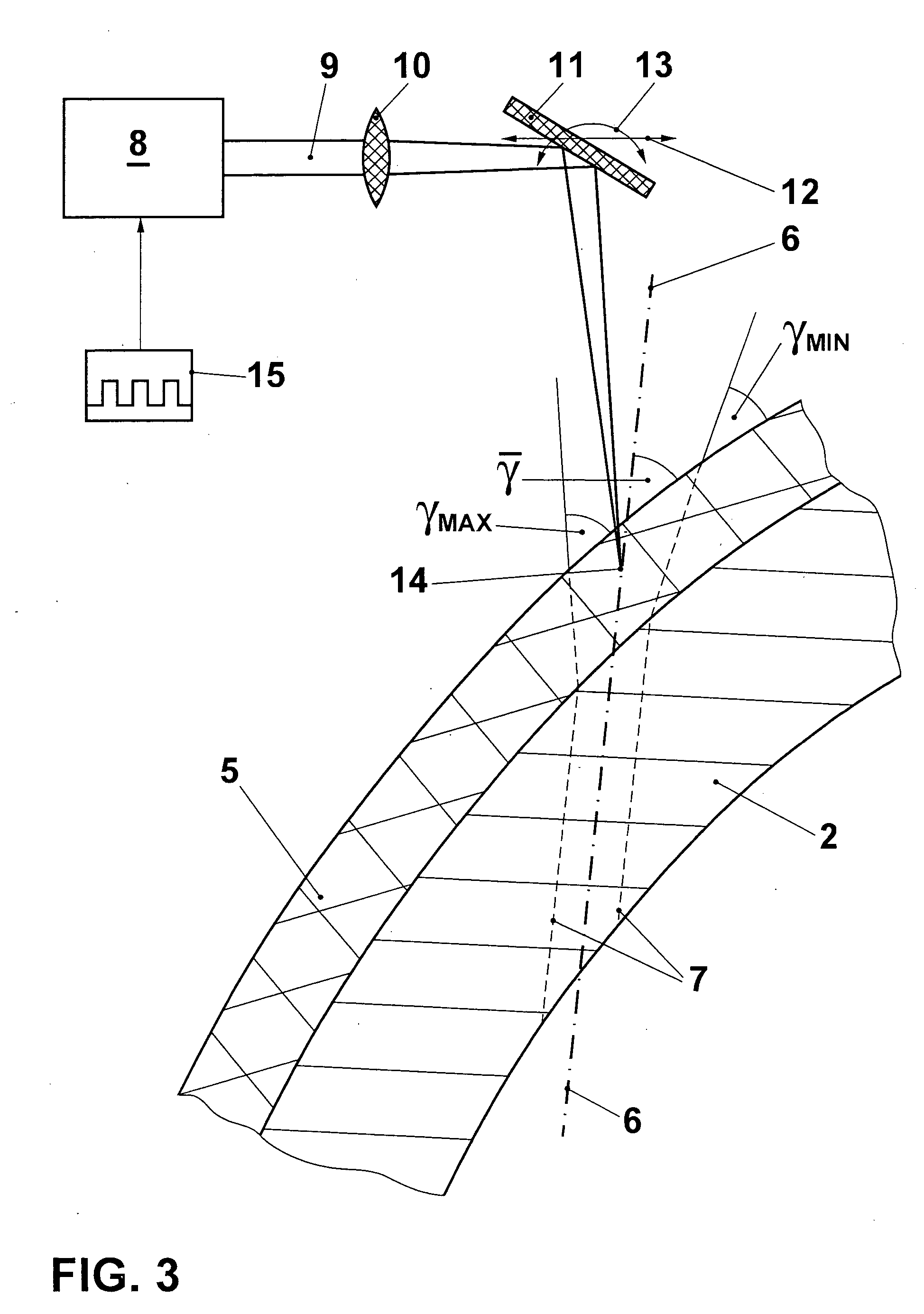Method of producing a composite component
- Summary
- Abstract
- Description
- Claims
- Application Information
AI Technical Summary
Benefits of technology
Problems solved by technology
Method used
Image
Examples
Embodiment Construction
[0037]FIG. 1 shows a raw schematic of a gas turbine engine. The engine basically comprises a compressor A, to compress an airflow, a combustion chamber B, in which the compressed airflow is admixed with a fuel, and said fuel is burnt with said compressed airflow, thus producing a high temperature flue gas flow, which is then expanded in the turbine C, thereby providing usable power to drive the compressor A and optionally a load, such as for example generator D. Compressor A and turbine C comprise airfoils arranged in multiple stages of stationary vane rows and moving blade rows. In particular the airfoils of the first turbine stages are subject to high thermal loading during operation, and require cooling.
[0038] While the skilled person will readily appreciate the application of the invention to coated components of the combustor, and to very different composite components, which are applied in quite different fields than gas turbines, the invention is discussed in more detail in ...
PUM
| Property | Measurement | Unit |
|---|---|---|
| Angle | aaaaa | aaaaa |
| Angle | aaaaa | aaaaa |
| Frequency | aaaaa | aaaaa |
Abstract
Description
Claims
Application Information
 Login to View More
Login to View More - R&D
- Intellectual Property
- Life Sciences
- Materials
- Tech Scout
- Unparalleled Data Quality
- Higher Quality Content
- 60% Fewer Hallucinations
Browse by: Latest US Patents, China's latest patents, Technical Efficacy Thesaurus, Application Domain, Technology Topic, Popular Technical Reports.
© 2025 PatSnap. All rights reserved.Legal|Privacy policy|Modern Slavery Act Transparency Statement|Sitemap|About US| Contact US: help@patsnap.com



